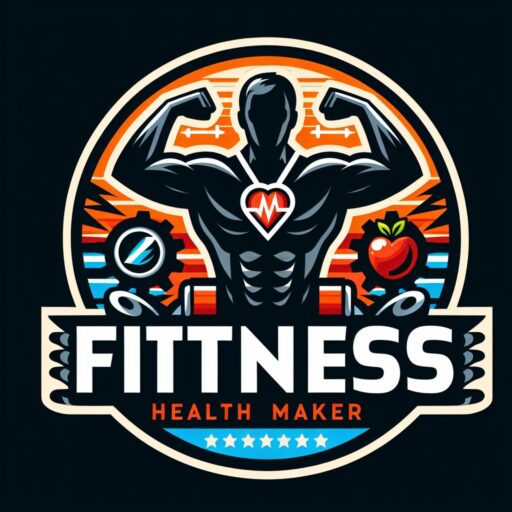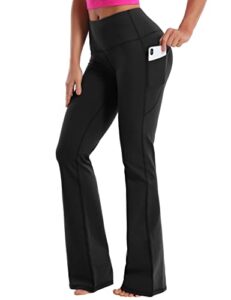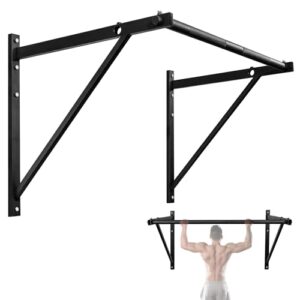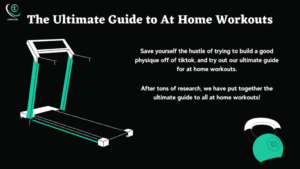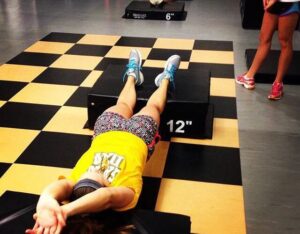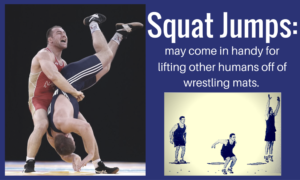Strength Training Anatomy is a detailed guide illustrating the muscles in action during exercises. Authored by Frédéric Delavier, it helps optimize workout effectiveness.
Enhance your fitness regimen with “Strength Training Anatomy,” the go-to resource for fitness enthusiasts and professionals alike. This book delves into the intricacies of muscle movement during strength exercises. Frédéric Delavier’s expertise brings the human body’s complex anatomy to life through detailed illustrations, offering readers a deeper understanding of each exercise and its impact.
This indispensable guide not only provides the visuals of muscle work but also offers tips on avoiding injury and maximizing training benefits. Whether you’re a seasoned athlete or a newcomer to the weight room, “Strength Training Anatomy” serves as an educational tool that furthers your knowledge of the body’s capabilities and limitations. Perfect for visual learners, this book supports a safer, more effective, and anatomically informed approach to strength training.
Introduction To Strength Training Anatomy
Understanding your body’s inner workings paves the way for optimal strength training. It’s not just about lifting weights. It’s about knowing which muscles you’re targeting. Strength Training Anatomy offers an in-depth look into the human body during exercise. This knowledge isn’t just for doctors or professionals—it’s vital for anyone looking to improve their physique and physical health through strength training.
The Importance Of Anatomical Knowledge
Anatomical knowledge in strength training is like a roadmap. It guides your fitness journey. Knowing your anatomy:
- Helps prevent injury
- Improves workout effectiveness
- Enhances muscle coordination
Recognize each muscle group’s role. Develop a precise workout plan that targets desired areas. Train with confidence and efficiency.
Benefits Of Strength Training For Muscle Health
Muscles do more than move your body. They also play a role in your overall health. Strength training benefits them in ways such as:
- Boosting metabolism
- Enhancing joint stability
- Improving posture and balance
- Increasing bone density
By focusing on muscle health, you ensure a stronger, resilient, and more energized body. Embrace the power of strength training to reach your health goals.
Muscles At Work During Exercise
When you lift a weight or perform an exercise, your body is a live action scene of muscles working together. This is how you get stronger and build muscle shape. But what really happens inside your body during a workout? Let’s dive into the fascinating world of muscle mechanics and the different types of contractions that bring your strength training to life.
Understanding Muscle Mechanics
Muscles move your body by tightening and loosening. They work like rubber bands but much more complex. When you learn about muscle mechanics, you recognize the amazing machinery within your body. Muscles operate by receiving signals from the brain. They use energy, pull on bones, and create movement.
- Agonist muscles are the main movers in an exercise.
- Antagonist muscles relax to let the agonist work.
- Synergists help the agonists smoothly complete movement.
Picture a bicep curl. Your biceps are the agonists, tightening to lift the dumbbell. Your triceps are the antagonists, taking a break. Other arm muscles act as synergists, guiding the motion.
Types Of Muscle Contractions
Different exercises use different muscle contractions. These contractions make muscles short or long as they change shape.
| Type | What Happens | Example |
|---|---|---|
| Isometric | Muscle length stays the same | Plank |
| Concentric | Muscle shortens as it contracts | Lifting a weight |
| Eccentric | Muscle lengthens while contracting | Lowering a weight |
Each contraction uses muscle fibers differently. With a squat, your quads contract concentrically to stand you up. They contract eccentrically to lower you down. During a squat, your muscles do not rest. They switch between contraction types to complete the move.
Core Muscle Groups And Their Roles
Understanding core muscles is crucial for total body strength. These muscles support the spine, and pelvis, and connect upper and lower body movements. They are the backbone of physical stability and power. The core isn’t just about abs. It includes multiple muscle groups that work together for a strong center.
Torso Stabilization Systems
The core’s main job is stabilization. Not just for the torso but the whole body during movement. This system is made up of several parts:
- Rectus abdominis – known as “six-pack muscles,” they flex the spine.
- Obliques – these muscles rotate and side bend the torso.
- Transverse abdominis – they stabilize the spine and pelvis.
- Erector spinae – an important group for extending the back.
Together, these muscle groups maintain posture and balance, especially during exercise.
Key Exercises For Core Strengthening
Building a solid core requires targeted exercises. Here are some of the best workouts:
- Planks – engage all the core muscles, enhancing stability.
- Bridge – targets glutes and lower back, important for a strong pelvis.
- Russian Twist – works the obliques, improving rotational strength.
- Bicycle Crunches – a combo of flexion and rotation, hits all ab muscles.
Incorporate these exercises into routines for a well-rounded core. Your overall fitness will see big improvements.
Upper Body Musculature
Exploring the upper body’s anatomy reveals a complex network of muscles. Strength training enhances these muscles for better performance and aesthetics. This post unpacks key exercises for a chiseled upper body. We’ll focus on the chest and shoulders, followed by arms and back. Proper technique is crucial for muscle growth while avoiding injuries. Let’s dive into making those upper body gains!
Targeting The Chest And Shoulders
Chest and shoulders play pivotal roles in upper-body strength. To sculpt these areas, incorporate compound movements into your routine.
- Bench Press: A cornerstone for chest development, targeting the pectorals.
- Shoulder Press: Focuses on deltoid muscles for broad shoulders.
- Dumbbell Flyes: Isolates chest muscles, enhancing definition.
- Lateral Raises: Tones the shoulder’s side for a wider frame.
Variety in exercises ensures comprehensive growth. Including both isolation and compound movements yields the best results.
Key Exercises For Arm And Back Strength
For arms and back, the focus shifts to biceps, triceps, and the broader back muscles.
| Exercise | Target Muscle | Benefits |
|---|---|---|
| Pull-Ups | Back, biceps | Improves grip, builds a wide back. |
| Rows | Mid-back | Strengthens the rhomboids, betters posture. |
| Bicep Curls | Biceps | Enhances arm definition, aids in arm flexion. |
| Tricep Dips | Triceps | Tones arms, crucial for push movements. |
Consistency and progressive overload are key. Always focus on form to engage the right muscles. This will help you build strength safely.
Lower Body Strength And Conditioning
Lower body strength is vital for nearly every activity. Whether you’re sprinting, jumping, or lifting, your legs are the foundation. Proper strength training not only builds muscle but also enhances overall athletic performance. It’s crucial for balance and stability.
Building Leg Muscle Power
Leg muscle power is the engine of your body’s athleticism. Training your legs involves various exercises focusing on each major muscle group. For instance, squats target your quadriceps, glutes, and hamstrings, while deadlifts work almost every lower body muscle. A routine including these key exercises ensures a balanced development of leg power.
- Squats
- Lunges
- Leg Presses
- Deadlifts
Each of these exercises activates multiple leg muscles. It’s best to perform them with proper form. This way, you can maximize muscle engagement and minimize injury risk.
Importance Of Glutes In Athleticism
The glutes are the powerhouse for many movements. They are critical in running, jumping, and changing direction. These muscles provide stability for the hips and lower back. Strong glutes contribute to a solid base of support for upper body movements.
| Exercise | Main Glute Muscles Worked |
|---|---|
| Hip Thrusts | Gluteus Maximus |
| Glute Bridges | Gluteus Maximus and Minimus |
| Step-Ups | Gluteus Maximus and Medius |
Incorporating glute exercises in your workout improves speed, agility, and power. This helps athletes excel in their sport. Ensure you include exercises like hip thrusts, glute bridges, and step-ups in your routine.

Credit: urbanicetribe.com
Mapping Out The Muscle Fibers
Understanding muscle anatomy boosts training effectiveness. Muscles consist of fibers. They adapt to specific workouts. To maximize gains, know your muscle fibers.
Fast-twitch Vs. Slow-twitch Fibers
Muscles contain different fibers. They perform uniquely. Fast-twitch fibers contract swiftly. They’re for sprinting and lifting heavy weights. In contrast, slow-twitch fibers support endurance activities. They’re for long-distance running or cycling.
- Fast-twitch fibers:
- Contract quickly
- Generate powerful forces
- Fatigue faster
- Slow-twitch fibers:
- Contract slowly
- Sustain activity
- Resist fatigue
Optimizing Training For Fiber Types
Train right for your fiber type. Fast-twitch fibers grow with heavy lifts. Use low reps and high weights. Slow-twitch fibers benefit from longer workouts. Use lighter weights and higher reps.
| Fiber Type | Training Style | Reps and Sets | Weight Type |
|---|---|---|---|
| Fast-twitch | Explosive, heavy lifts | Low reps, few sets | High weight |
| Slow-twitch | Endurance, steady-state | High reps, more sets | Low to moderate weight |
Customize your workouts. Use fiber-specific training. Fuel muscle growth effectively. Start with a test. Identify your dominant fiber type. This guides your workout plan.
Anatomy Of A Strength Training Program
Understanding the build of a strength training program sets the foundation for muscle growth and resilience. Effective routines merge science and strategy to sculpt the body. Dive into this blueprint to boost your workouts. Delve deep into the precise structure that underpins physical transformation. Let’s unravel the composition of an efficient strength training program tailored for success.
Components Of An Effective Routine
Key elements work together to foster strength and power. The right mix ensures progress without injury. Below, find the cornerstones of a muscular masterpiece.
- Warm-up: Prepares muscles and joints.
- Compound Movements: Work multiple groups for growth.
- Isolation Exercises: Target specific areas for definition.
- Progressive Overload: Gradually increases intensity.
- Rest: Allows for recovery and strength gain.
- Cool Down: Reduces heart rate and muscle tightness.
Adapting Programs To Anatomical Considerations
Each individual’s anatomy is unique. Adapt your routine to align with your body’s specificity.
| Body Part | Exercise Modification | Benefit |
|---|---|---|
| Shoulders | Arched presses | Reduces strain |
| Back | Supported rows | Protects the spine |
| Knees | Seated leg lifts | Minimizes pressure |
Consult a professional when in doubt to tailor a routine that favors your body. Combine exercise science with self-awareness for a personalized approach to strength training. Embrace your anatomy, unlock growth, and maximize potential through thoughtful program design.

Credit: www.linkedin.com
The Role Of Nutrition In Muscle Development
Nutrition plays a crucial role in the anatomy of strength training. To understand its impact, it’s essential to dive into key nutrients that fuel muscle repair. Moreover, one should consider how different supplements affect the body. These components ensure effective muscle growth and optimal performance.
Key Nutrients For Muscle Repair
Proper muscle development hinges on several essential nutrients. Here’s a breakdown of the most vital ones:
- Protein: The building block for muscle recovery.
- Carbohydrates: Provide energy for muscle endurance.
- Fats: Essential for hormone production that aids muscle growth.
- Vitamins and Minerals: Support overall body functions impacting muscle recovery.
Muscles need these nutrients to repair after workouts. Without them, gains would be minimal.
Supplements And Their Anatomical Impacts
Supplements can give muscles an extra boost for development.
| Supplement | Impact on Anatomy |
|---|---|
| Creatine | Increase muscle energy storage, aiding short bursts of activity. |
| Branched-Chain Amino Acids (BCAAs) | Promote muscle protein synthesis and reduce breakdown. |
| Omega-3 Fatty Acids | Reduce muscle inflammation and support recovery. |
| Whey Protein | Supply muscles with a quick source of protein post-workout. |
Integrating these supplements can enhance training outcomes and support muscle anatomy’s complex needs.
Recovering With Purpose: Anatomy And Rest
Understanding the anatomy of your muscles is key to effective recovery. After intense workouts, the body needs time to heal and strengthen. This section dives into how your muscles repair and the best ways to support recovery.
The Muscle Repair Process
Strength training causes tiny tears in muscle fibers. Muscle repair is the body’s way of building stronger tissues. This process involves:
- Removing damaged proteins
- Regenerating muscle fibers
- Replenishing energy stores
Proper rest is vital for this to happen. The peak of repair occurs when you’re not exercising.
Rest And Recovery Techniques
Effective recovery strategies ensure you come back stronger. Techniques include:
| Technique | Description |
|---|---|
| Sleep | 7-9 hours allows muscle repair and hormone regulation. |
| Nutrition | Protein and carbs rebuild energy and muscle tissues. |
| Hydration | Water supports nutrient transfer and metabolic processes. |
| Active Recovery | Low-intensity activities promote blood flow and reduce soreness. |
| Stretching | Improves flexibility and may decrease recovery time. |
Alternate intense sessions with lighter activities for balanced training. Remember, rest days are not idle time but a phase for improvement and growth.
Injury Prevention And Anatomical Knowledge
Understanding the body’s inner workings enhances strength training effectiveness and reduces injury risk. Mastering anatomy allows athletes to create safer, more targeted workouts. Knowledge of muscle functions and joint mechanics can prevent training setbacks and optimize overall fitness.
Common Training Injuries
Injuries can set trainers back significantly. Recognizing the most frequent issues is key. Below are common injuries that can occur without proper form or preparation:
- Rotator cuff tears: Often from overhead activities
- Knee ligament injuries: Such as ACL tears from sudden stops or turns
- Lower back strains: Resulting from improper lifting techniques
- Wrist sprains: Stemming from poor wrist support during weight training
Using Anatomy To Train Smarter, Not Harder
A solid grasp of anatomy leads to smarter training plans. Here are ways to use anatomical knowledge for injury prevention:
- Target the right muscles: Ensure exercises focus on intended muscle groups.
- Understand limits: Recognize when joints or muscles are overextended.
- Improve technique: Align body parts correctly to reduce strain.
- Incorporate recovery: Plan rest days for muscle repair and growth.
By marrying anatomy expertise with strength training, practitioners gain long-term health benefits and exercise effectiveness.

Credit: www.target.com
Frequently Asked Questions On Strength Training Anatomy
Which Edition Of Strength Training Anatomy Is Best?
The latest edition of Strength Training Anatomy, typically the fourth edition, is considered the best as it offers the most updated content and illustrations.
What Is The 4th Edition Of Strength Training Anatomy?
The 4th edition of “Strength Training Anatomy” is an updated guide illustrating muscle workouts through detailed anatomical drawings.
What Is Strength Training Anatomy?
Strength Training Anatomy refers to the study of muscle groups and how they are engaged during strength training exercises to improve muscle function and physical fitness.
How Does Strength Training Benefit The Body?
Strength training enhances muscle mass, strength, endurance, and contributes to better overall physical health and metabolism.
Which Muscles Are Targeted In Strength Training?
Strength training routines typically target all major muscle groups including the chest, back, arms, shoulders, legs, and core.
Can Strength Training Improve Posture?
Yes, consistent strength training can strengthen core muscles, which helps maintain proper alignment and improves posture.
What’s The Best Way To Start Strength Training?
Starting with a balanced routine that includes exercises for all major muscle groups, using correct form, and gradually increasing intensity is the best approach.
Conclusion
Understanding strength training anatomy empowers you in your fitness journey. Grasping how muscles interact during workouts optimizes your gains. This knowledge leads to safer, more effective exercise. Embrace this foundation for a profound impact on your strength-building regimen. Ready to lift smarter and grow stronger?
